Last year’s complete redesign of GM’s full-size SUVs was the most significant since the early 1990s, with the long-awaited switch to an independent rear suspension resulting in substantial improvements to the ride, handling, interior space and cargo capacity. The 2022 Chevrolet Tahoe and its extended-length Chevy Suburban sibling, which get a few key updates described below, are therefore more competitive against their scarce number of rivals. In fact, even if we might prefer the Ford Expedition’s turbo V6 as a base engine, the Chevrolets overall can be considered our new top full-size SUV choices.
The reasons? The available diesel engine, for one, which will save you many hundreds of dollars every year compared to gas engines, while returning the same torque figure (at a lower rpm) than the big 6.2-liter gas V8. The interior is another strong point, as its design and quality is elevated from Chevy’s trucks (unlike the Expedition), and features compelling technology. The driving experience is also quite good for a truck-based vehicle, especially with the air suspension and/or magnetic damper options. While we still think you should be sure you really need the extreme capabilities of a full-size SUV to justify the initial price and fuel cost over a large crossover, the Chevy Tahoe and Suburban are least excellent examples of the breed.
Interior & Technology | Passenger & Cargo Space | Performance, Towing & Fuel Economy
What they’re like to drive | Pricing & Features | Safety Features & Crash Ratings
What’s new for 2022?
After being completely redesigned last year, Chevrolet has made a few key updates to the Tahoe and Suburban. Inside, all but the base LS trim level gets a new 12-inch digital gauge display bordered by a traditional analog tach and speedo (the old display was 8 inches). Those same trims also get navigation as standard equipment within the 10.2-inch central infotainment touchscreen. Lane-keeping assist and parking sensors are also now standard, while Reverse Automatic Braking is added to the top trim levels’ Enhanced Display and Alert package. Finally, the 6.2-liter V8 option is expanded to the Z71, RST and Premier trim levels, but with the exception of the Premier, it requires selecting one or more packages.
What’s the Tahoe and Suburban interiors and in-car technology like?
Unlike past generations, the current Chevy Tahoe and Suburban get an interior that’s completely different than the Silverado pickup truck. That’s a very good thing. The dashboard is fairly low, and cascades downward in a gentle curve. It’s thinner and has nice brightwork and detailing that both makes the cabin feel airier and more premium than that of the Silverado. Controls are generally easy to use, from the responsive and simple standard 10-inch infotainment touchscreen to the large buttons and knobs in the center stack. The push-button transmission is a little odd, but is easy to adjust to.
The Tahoe and Suburban can be loaded up with some pretty nifty technology, too. A 12-inch screen is shoehorned between analog gauges in most trim levels, and Chevy even offers a 15-inch color head-up display. You can find our review of the standard 10.2-inch touchscreen infotainment system in the video below. Rear passengers, meanwhile, can be treated to dual 12.6-inch entertainment screens. They can even allow rear passengers to find and select destinations to be put into the SUV’s navigation.
How big are the Tahoe and Suburban?
Being full-size SUVs, the Tahoe and Suburban are sizable, and last year’s redesign made them bigger than ever. The Tahoe grew the most with an extra 6.7 inches of overall length and 4.9 inches of wheelbase. The Suburban only gained 1.3 inches of extra length, but the wheelbase expanded by 4.1 inches. And while going to an independent rear suspension (IRS) didn’t add any external size, it did help expand the interior, which is vastly larger than before.
Unsurprisingly, the biggest interior gains are enjoyed by the more substantially expanded Tahoe. It picks up 3 inches of legroom in the second row, and a massive 10.1 inches in the third row thanks to the IRS and the consequent lower floor. The Suburban gains a little over 2 inches of legroom for each row. Importantly, the size increase is noticeable in practice. The third row in particular is pretty flat, but it’s exponentially more spacious and comfortable than before. Even tall adults can sit comfortably back there now (versus almost no one), and although the Ford Expedition’s is still more comfortable and spacious overall, few other vehicles can top the Tahoe (or Suburban) for third-row space.
Cargo space expands significantly, too, compared with the smaller previous models. Behind the third row seats, the Tahoe has 25.5 cubic feet of space, an improvement of 10.2 cubic feet. That’s theoretically about a 6-cubic-foot advantage over the Expedition on paper, but in practice, we found the actual difference to be negligible. Still, it’s a genuinely large space for a three-row vehicle. Of course, if you plan to routinely travel with all three rows filled, opting for the Suburban and its added cargo space is a good idea. Its cargo space behind the third row swells to 41.5 cubic feet (an increase of 2.2 cubic-feet from before). We should also note that the switch to an independent rear suspension last year has significantly lowered the floor and therefore liftover height.
What are their fuel economy, performance and towing specs?
The 2022 Chevy Tahoe and Suburban have three different engines to pick from. The base engine is a naturally aspirated 5.3-liter V8 making 355 horsepower and 383 pound-feet of torque. It’s coupled to a 10-speed automatic transmission and available with either rear-wheel or four-wheel drive. EPA estimates for 2022 were not available at the time of this writing, but we don’t anticipate any significant changes. Regardless of drive wheels, the engine in the Tahoe returns 15 mpg in the city, 20 on the highway and 17 in combined driving. The Suburban is only ever-so-lower depending on trim and drivetrain.
Available on the Z71, RST, Premier and High Country is a naturally aspirated 6.2-liter V8. It makes 420 horsepower and 460 pound-feet of torque. Like the 5.3-liter engine, it comes with a 10-speed automatic and either rear-wheel or four-wheel drive. City and highway fuel economy differs somewhat by drivetrain, trim level and Tahoe or Suburban, but all versions with this engine get 16 mpg combined.
A unique offering for the GM full-size SUVs is the diesel 3.0-liter inline-six. It’s the only engine like it in the class. It makes 277 horsepower and 460 pound-feet of torque and will also get the 10-speed automatic. It obliterates the fuel economy of the engines, with 21 mpg city, 28 mpg highway and 24 mpg combined for the 2WD Tahoe and 20/26/22 with 4WD. The Suburban is basically the same. You could save hundreds of dollars on fuel every year by going with the diesel.
Towing capacities are between 7,500 and 8,000 pounds depending on body style, engine and drivetrain. The diesel is the best choice, but only slightly. A tow package increases capacity across the board and actually results in the 5.3-liter being slightly better, but again, the difference is small.
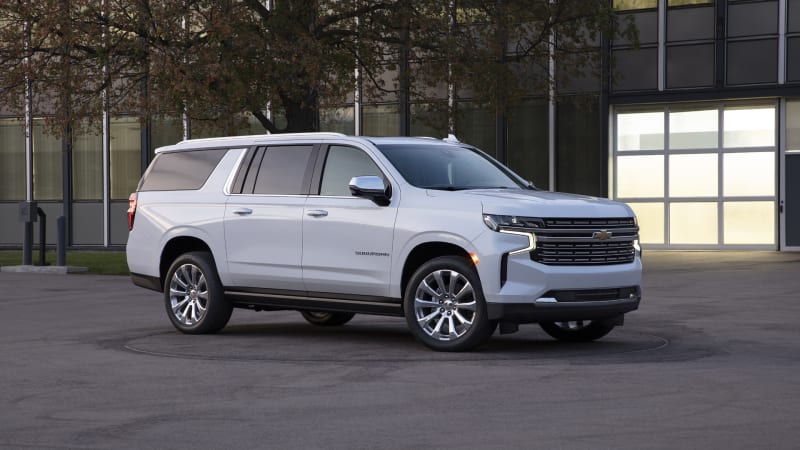
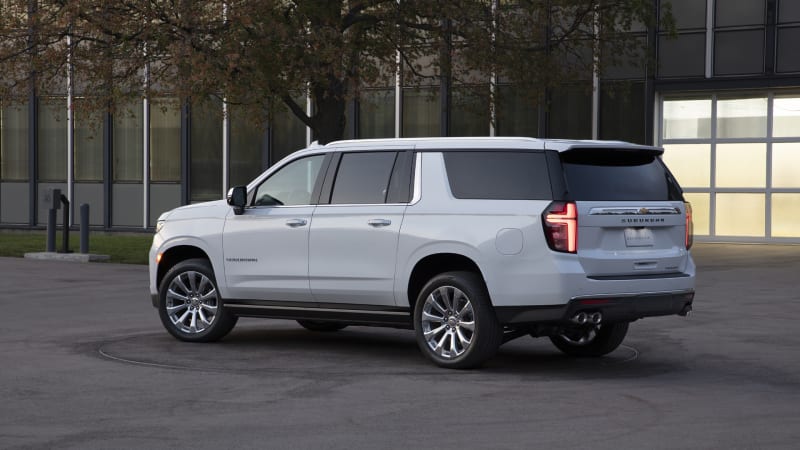
What are the Tahoe and Suburban like to drive?
There are a wide array of Tahoe and Suburban powertrain and chassis combinations, and we haven’t driven them all, but the versions we’ve driven have been impressive. Four suspension offerings are available: a fixed steel spring and shock system; an air suspension; a steel spring suspension with magnetic dampers; air suspension with magnetic dampers. We haven’t sampled the base system, but we would nevertheless suggest a Tahoe or Suburban with the magnetic dampers. It provides a glassy smooth ride, limited body roll, and its controlled enough to eliminate nearly all the shimmies and shudders that crop up in large, body-on-frame vehicles.
The air suspension on its own lets those body wiggles through more, but is still pleasant. In the default comfort mode, it rides fairly soft with moderate body roll, and the sport mode stiffens things up noticeably, but without becoming uncomfortable. Regardless of suspension, you get the same steering, which is excellent. It’s nicely weighted, and quite precise. And even with the more roly-poly base air suspension, the truck handles well with good turn-in and a stable, composed feel even over bumpy corners.
We’ve also now driven Tahoes/Suburbans with every available engine. The 5.3-liter V8 provides perfectly adequate acceleration, but it’s no match for the Expedition silky smooth and far more powerful turbo V6. The 6.2-liter is a much better contender and does liven things up a bit, though we still wouldn’t call it fast. Ultimately, we think the Duramax diesel is the best choice. It certainly won’t be fast, either, but its benefits are many. Its peak torque matches the 6.2-liter, but occurs at 1,500 rpm rather than 4,100. That makes it well-suited to towing and results in acceleration that feels stronger off the line. Importantly, its fuel economy will also be substantially better than the gas V8s.
What other Tahoe and Suburban reviews can you read?
2021 Chevrolet Tahoe Infotainment System Driveway Test + Video
Taking a closer look at the 10.2-inch touchscreen included in every ’21 Tahoe and Suburban.

2021 Chevy Tahoe Rear Seat Driveway Test + Video
The switch to an independent rear suspension has profoundly increased third-row seat space for 2021. There are several other new features, which we highlight in this post with video. Riswick’s dog also makes an appearance.
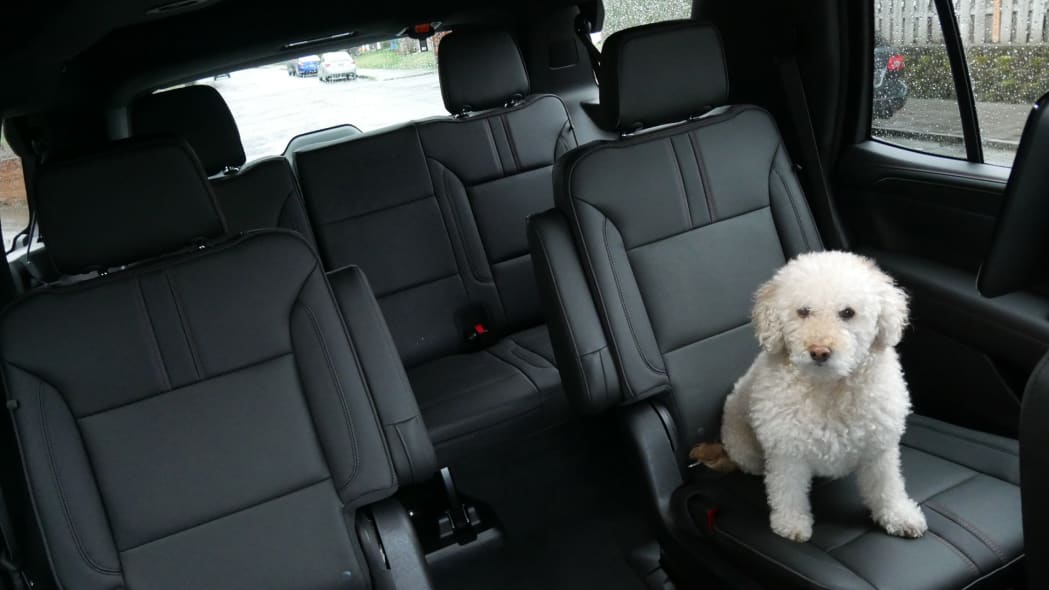
2021 Chevy Tahoe Luggage Test | How much fits behind the third row?
The independent rear suspension makes a huge difference for cargo space, specifically behind the third row. We take a closer look and compare it to the Ford Expedition.
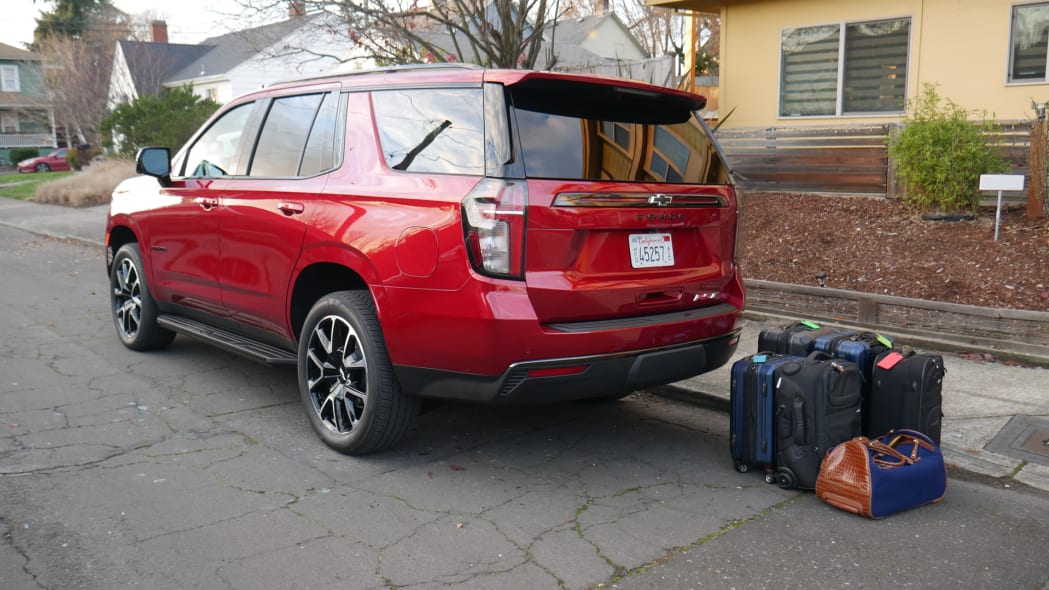
2021 Chevy Tahoe Suspension Deep Dive | Explaining the IRS you should be happy about
We’ve talked a ton about the many benefits of GM switching the Tahoe and Suburban to an independent rear suspension. Now, in this deep dive review, engineer Dan Edmunds explains the “how” of the new suspension design plus other details about its available air suspension with magnetic dampers.
2021 Chevy Suburban Diesel First Drive
Our most substantial drive of the Suburban, plus our first impressions of the new Duramax diesel option.
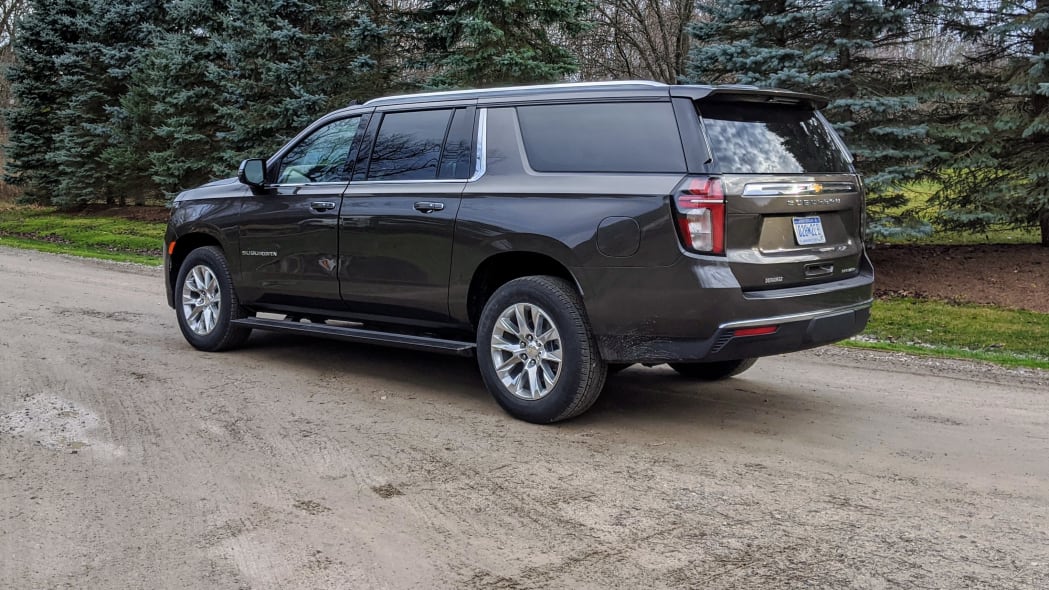
2021 Chevy Tahoe First Drive
We take our first drive in the new Tahoe and find that it drives well and has a quality interior.
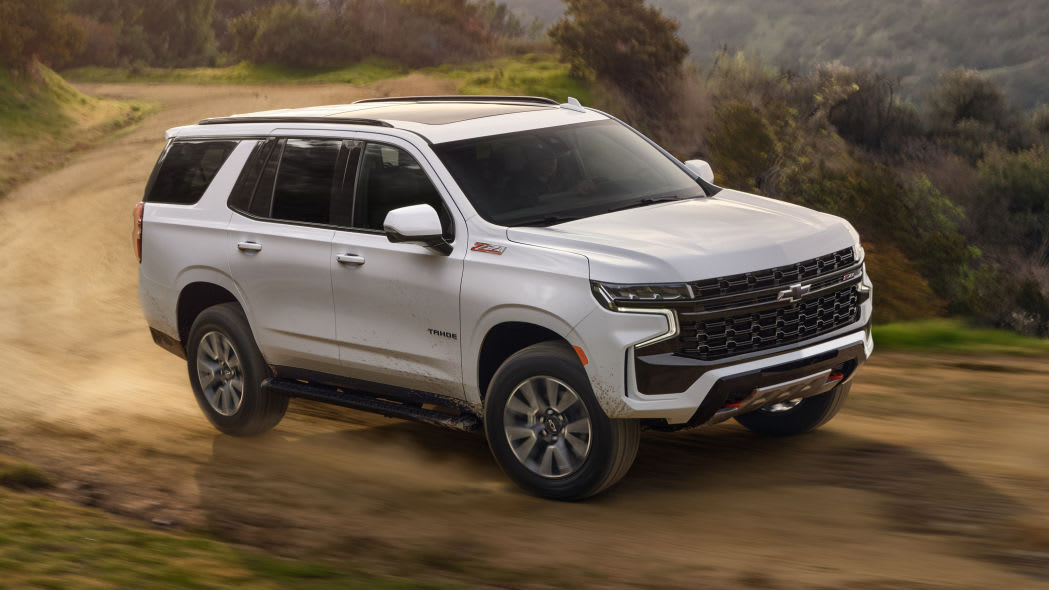
How much is the 2022 Chevrolet Tahoe and Suburban prices and what features are available?
Pricing was not available at the time of this writing, but you will eventually find up-to-date Tahoe pricing here on Autoblog and Suburban pricing here.
That said, we do not anticipate significant increases over 2021, which started at $50,295 for a base LS RWD Tahoe. A comparable Suburban started at $52,995. Adding four-wheel drive is a $3,000 option.
Basic equipment includes the 5.3-liter V8, engine and transmission coolers, and a limited-slip differential. On the outside, it gets 18-inch alloy wheels, heated side mirrors, running boards, rear parking sensors, LED headlights and remote start. Inside it has proximity entry and starting, three-zone climate control, eight-way power driver seat and six-way power passenger seat, the 10-inch infotainment screen, 4.2-inch screen in the instrument cluster, a six-speaker sound system, wireless Apple CarPlay and Android Auto, and some basic driver assistance tech (see Safety section). We’re guessing most potential Tahoe/Suburban buyers will likely start their search with the LT trim, though, as for around $5,000 it includes leather seating, heated front seats and an enlarged gauge display among other features.
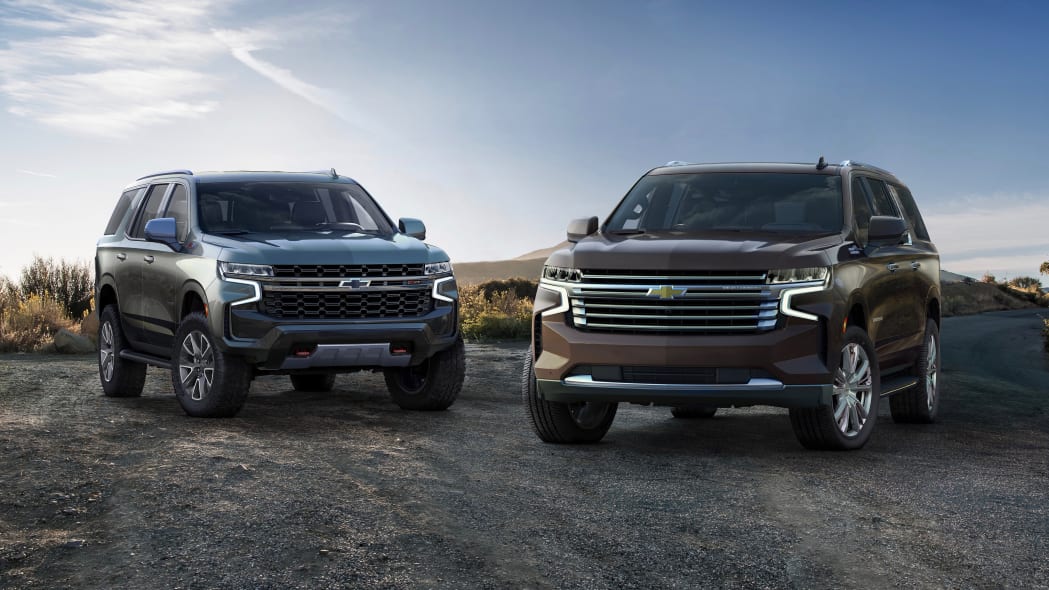
Noteworthy trim levels are the Z71 and the High Country (pictured above). The Z71 gets a unique front fascia and bumper that provides a better approach angle and more aggressive appearance. It also gets hill-descent control, 20-inch wheels, all-terrain tires and a skid plate. The Z71 can be further enhanced with the air suspension for even greater ground clearance. It starts at $60,495 for the Tahoe and $63,195 for the Suburban. The High Country is the luxury specification and comes with the 6.2-liter V8, magnetic and air suspension, 22-inch wheels, 360-degree cameras, adaptive cruise control, blind-spot monitoring and lane keep assist, rear camera mirror, leather heated and cooled front seats, heated steering wheel, heated second row seats, power folding rear seats, a large instrument panel screen and head-up display, 10-speaker Bose sound system and wireless phone charging.
Also worth noting are the towing assists available on the Tahoe and Suburban. There are cameras that can provide up to nine views for maneuvering and monitoring a trailer. They come standard with a trailer guidance feature with the standard rear-view camera. There’s also an app on the infotainment that lets you store information about your trailer and go through various checks when hooking up the trailer.
What are the Tahoe and Suburban’s safety ratings and driver assistance features?
The Tahoe and Suburban come standard with automatic emergency braking with pedestrian detection, lane-departure warning and lane-keeping assist, front and rear parking sensors, automatic high-beam headlights and a rear seat reminder. Optional safety features that come standard on some higher trim models include reverse automatic emergency braking, blind-spot warning, rear cross-traffic alert, parking sensors and adaptive cruise control.
In government crash testing (NHTSA), both the Tahoe and Suburban received four out of five stars for overall crash protection, plus four stars for frontal protection, five stars for side protection and three stars for rollover. The Insurance Institute for Highway Safety hadn’t tested them at the time of this writing.

